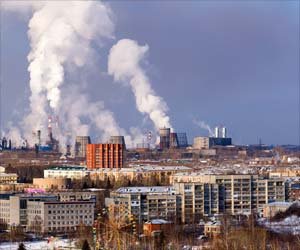Coal Particulate Pollution’s Death Risk Doubles PM2.5 from Other Sources

Researchers found that exposure to fine particulate air pollutants, specifically coal PM2.5 from power plants, carries over twice the mortality risk compared to PM2.5 from alternative sources.
Between 1999 and 2020, 460,000 deaths among Medicare enrollees were attributable to coal-fired power plants; 10 of these plants each contributed at least 5,000 deaths, according to the study led by George Mason University, The University of Texas at Austin, and Harvard T.H. Chan School of Public Health.
Majority of Deaths Linked to Peak Coal PM2.5 Levels
Most of the deaths occurred between 1999 and 2007, when coal PM2.5 levels were highest, according to the study published in the journal Science. While previous studies have quantified the mortality burden from coal-fired power plants, much of this research has assumed that coal PM2.5 has the same toxicity as PM2.5 from other sources.”PM2.5 from coal has been treated as if it’s just another air pollutant.
But it’s much more harmful than we thought, and its mortality burden has been seriously underestimated,” said lead author Lucas Henneman, assistant professor at George Mason University.Using emissions data from 480 coal power plants in the US between 1999 and 2020, the researchers modeled where wind carried coal sulfur dioxide throughout the week after it was emitted and how atmospheric processes converted the sulfur dioxide into PM2.5.
They then examined individual-level Medicare records from 1999 to 2016, representing the health statuses of Americans ages 65 and older and representing a total of more than 650 million person-years.By linking the exposure fields to the Medicare records, inclusive of where enrollees lived and when they died, the researchers were able to understand individuals’ exposure to coal PM2.5 and calculate the impact it had on their health.
Advertisement
“Beyond showing just how harmful coal pollution has been, we also show good news: Deaths from coal were highest in 1999 but by 2020 decreased by about 95 percent, as coal plants have installed scrubbers or shut down,” Henneman said.
These findings can help policymakers and regulators identify cost-effective solutions for cleaning up the country’s air, for example, by requiring emissions controls or encouraging utilities to use other energy sources, like renewables, the authors noted.
Source: IANS
Source link
#Coal #Particulate #Pollutions #Death #Risk #Doubles #PM2.5 #Sources



